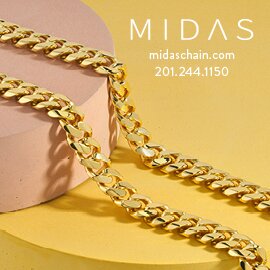George Santayana said, “Those who cannot learn from history are doomed to repeat it.”
An interesting quote and one that begs another question, is our industry one that learns from history or doomed to continue to repeat it? Ok, so doomed may be too harsh a word, however, it makes a clear point.
Do you remember about 5-6 years ago when alternative metals started being introduced in the wedding ring market? Gold and platinum prices were going through the roof and alternative metal wedding rings were a huge hit. Manufacturers were adjusting themselves to the more price conscious consumer. So what happened? If any retail jewelry store today looks at their wedding ring sales figures from today vs. 5 years ago there are some very clear trends and similarities. Those retailers that entered the alternative market will say the category of alternative metal wedding rings is a large percentage of their business and mostly what they sell. However, they will also concede their gross profit dollars from this category has gone down. For example, retailers used to sell a wedding ring in the $600-$700 range, and could make about $250 per ring. Today the average sale of an alternative metal wedding ring is anywhere from $100-$300, with gross profit starting at less than $100 per ring. Stores need to sell a lot more rings to get the same gross profit dollars. Plus, anyone can go online and look up a tungsten or titanium ring and buy it on Amazon.com starting at $25. What is that saying about your store that charged even $100 for the same ring?
So why bring this up now? Well recently there has been a lot of talk about man-made diamonds. Besides the recent controversy about mixing man-made with natural diamonds, some manufacturers are starting to produce lines, including engagement ring lines, showcasing these diamonds. Anyone can go online and find man-made diamond engagement rings being sold with a 1.03ct center, in a white gold solitaire 6 prong setting, for $768. It begs the question, is there a market out there for this product?
The answer will be yes if we allow it. And just like we allowed a market to be created for alternative metals, we will allow a market to be created for man-made diamonds. What is the result? Well some will say that we are just adjusting ourselves to the more price conscious consumer. Others may say the industrial application for these stones is really where the market is. And others may say this is just the way the market is shifting, and it is allowing designers and manufacturers to be creative.
What do I think? I think retail jewelry stores and jewelry manufacturers have to decide if they are in the fine jewelry business or the costume jewelry business, or perhaps both. Be prepared that profit margin dollars will go down; you will need to start selling more units to make up for the loss in gross profit; and your expense structure will change. More unit sales, may mean more labor to produce those sales, which in turn means higher payroll and related expenses. More unit sales, means higher production costs. More unit sales means more effort to achieve the desired result.
Whichever direction you choose, you must not only embrace it, but prepare for it.
Ann Arnold
Man-Made Diamonds, Friend or Foe?
Ann Arnold’s article focused on the marketing aspects of synthetic diamonds and posits that jewelers will have the choice whether or not to sell these goods. My concern isn’t about how to market these goods, nor am I going to make the argument for or against carrying them (at this time). My concern is about disclosure and about the potential for undermining the consumer confidence that supports diamond values worldwide. Until detection methods are ubiquitous in every jewelry store, and jewelers are diligent about checking every single diamond that comes into their shop for repair, I will remain concerned.
The scenario that concerns me is when a man-made diamond ring is sold for $5,000, for example, but is undisclosed as being synthetic and a year or two later shows up in a different store for a repair. The customer asks for an updated appraisal and this second jeweler, who is not a gemologist and has no business doing the appraisal anyway, does not identify it as being man-made. I don’t have to tell you where this story is heading – at some point, someone will be accused of switching the customer’s natural diamond with a synthetic.
This won’t be happening just one time every now and again. This story will happen multiple times and to enough people that the TV & cable news stations will get a hold of it and they will interview jewelers with their hidden cameras about how jewelers and consumers will be able to tell the difference between natural and the synthetic diamonds. Of course, this will happen right around Thanksgiving. Some will show off their labs and demonstrate how easy it is to separate the synthetic from natural diamond, but some will just shrug and tell the reporters they can’t tell the difference. And that’s when consumers will lose confidence in the value of a natural diamond.
So, yes, there will be a market for man-made diamonds, just as there is for CZ’s and synthetic moissanite, laser drilled and fracture filled diamonds and glass. But none of those other treated or simulated diamonds has had the potential to disrupt the confidence of the marketplace.

